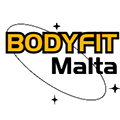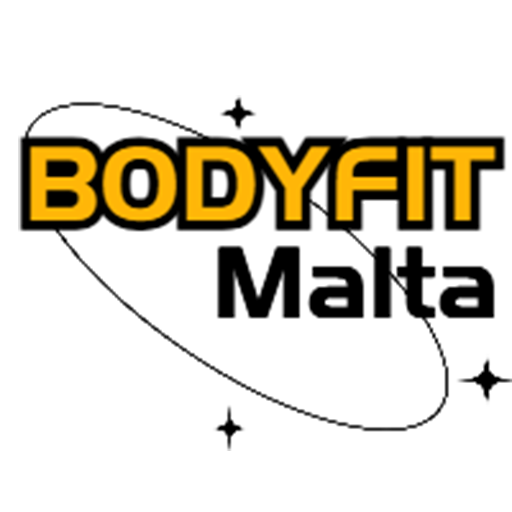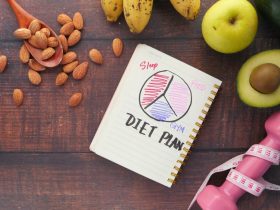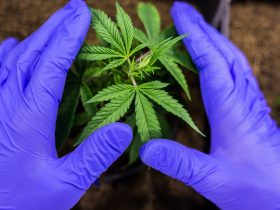Are you tired of fad diets that promise quick weight loss but leave you feeling deprived and unsatisfied? The ketogenic diet, also known as the keto diet, maybe the solution you’ve been searching for. In this comprehensive guide, we’ll dive into what the keto diet is, the science behind it, how to follow it, and the benefits and drawbacks of this popular diet.
What is the Keto Diet?
The ketogenic diet is a high-fat, low-carbohydrate diet that has been gaining popularity in recent years. The idea behind the diet is to get your body into a state of ketosis, where it burns fat for energy instead of carbohydrates. This is achieved by significantly reducing your carbohydrate intake and increasing your fat intake.
The Science Behind the Keto Diet
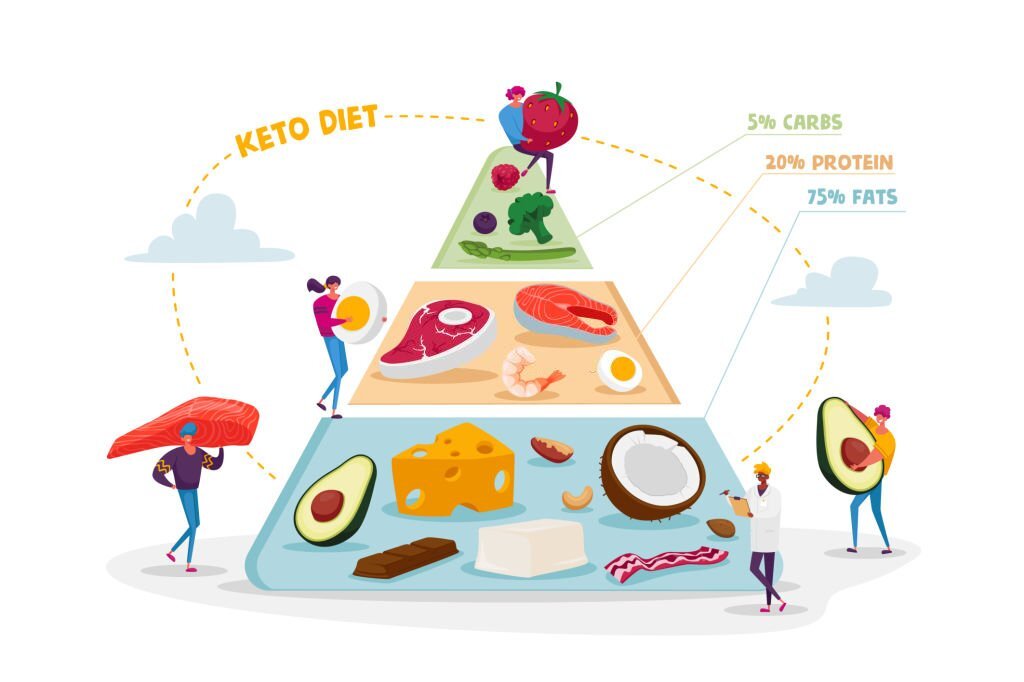
The keto diet is based on the concept of metabolic switching, where your body switches from burning carbohydrates for energy to burning fat. This is achieved by reducing your carbohydrate intake to a very low level, which forces your body to turn to alternative sources of energy.
When you consume carbohydrates, your body converts them into glucose, which is used as your primary source of energy. However, when you reduce your carbohydrate intake, your body enters a state of ketosis where it burns stored fat for energy instead of glucose. This process leads to weight loss and improved health markers, such as reduced inflammation and improved blood sugar control.
For more information, Follow this Harvard Research.
How to Follow the Keto Diet
Starting the keto diet can seem overwhelming, but with a little preparation and planning, it can be manageable and even enjoyable. Here are the steps to get started:
- Determine your daily caloric needs and macronutrient ratios.
- Reduce your carbohydrate intake to a very low level, typically less than 50 grams per day.
- Increase your fat intake to make up for the reduction in carbohydrates. Healthy sources of fat include avocados, nuts, oils, and fatty fish.
- Maintain a moderate protein intake to support muscle growth and repair.
- Keep track of your food intake and monitor your progress.
It’s important to remember that everyone’s body is different and what works for one person may not work for another. It’s important to listen to your body and adjust your macronutrient ratios as needed to find what works best for you.
The Different Types of Keto Diets: Which One is Right for You?
The Keto diet, also known as the ketogenic diet, is a low-carb, high-fat diet that has gained popularity in recent years as a weight loss solution and for its potential health benefits. But did you know there are different types of keto diets? In this article, we’ll take a closer look at the different types of keto diets, so you can choose the one that’s right for you.
1. Standard Ketogenic Diet (SKD)
The Standard Ketogenic Diet, also known as SKD, is the most popular and well-known type of keto diet. It involves consuming a very low amount of carbohydrates (usually less than 50 grams per day), moderate amounts of protein, and high amounts of healthy fats. This type of diet causes your body to enter a state of ketosis, where it begins to burn fat for energy instead of carbohydrates.
2. Cyclical Ketogenic Diet (CKD)
The Cyclical Ketogenic Diet, also known as CKD, involves following the standard ketogenic diet for several days, followed by a few days of higher carbohydrate consumption. This type of diet is often used by bodybuilders and athletes who need to carb-load before a competition.
3. Targeted Ketogenic Diet (TKD)
The Targeted Ketogenic Diet, also known as TKD, is similar to the standard ketogenic diet, but with the addition of carbohydrates consumed around workout times. This type of diet is designed for individuals who are highly active and need the extra energy provided by carbohydrates during their workouts.
4. High-Protein Ketogenic Diet
The High-Protein Ketogenic Diet is a variation of the standard ketogenic diet, but with an emphasis on consuming more protein. This type of diet is often used by those looking to build muscle mass while following a ketogenic diet.
5. Dirty Keto
The term “dirty keto” is used to describe a version of the ketogenic diet that allows for the consumption of processed foods and low-quality fats. While this type of diet may lead to quick weight loss, it is not recommended as it does not provide the same health benefits as the other types of ketogenic diets.
In conclusion, there are several different types of ketogenic diets to choose from, each with its own unique set of benefits and drawbacks. It’s important to consider your individual health needs, fitness goals, and lifestyle before choosing the right ketogenic diet for you. Make sure to consult with a healthcare professional to ensure the safety and effectiveness of the diet you choose.
The Benefits of the Keto Diet

There are several benefits to the Keto diet, including weight loss, improved energy levels, and improved heart health.
- Weight Loss
One of the biggest benefits of the Keto diet is weight loss. The diet is designed to help you lose weight by reducing your carb intake and increasing your fat intake. This causes your body to enter a state of ketosis, where it burns fat for energy instead of glucose. As a result, you’ll lose weight and keep it off.
- Improved Energy Levels
Another benefit of the Keto diet is improved energy levels. When your body is in a state of ketosis, it burns fat for energy instead of glucose. This means you’ll have more sustained energy throughout the day, without the ups and downs that come with a high-carb diet.
- Improved Heart Health
The Keto diet has also been shown to improve heart health. By reducing your carb intake and increasing your fat intake, you can lower your cholesterol levels, reduce inflammation, and improve your overall heart health.
The Risks of the Keto Diet
While the Keto diet has many benefits, there are also some risks associated with it. It’s important to be aware of these risks so that you can make an informed decision about whether or not the Keto diet is right for you.
Nutrient Deficiencies
One of the biggest risks of the Keto diet is nutrient deficiencies. The diet is designed to reduce your carb intake, which means you’ll be eating fewer fruits, vegetables, and whole grains. This can lead to deficiencies in vitamins and minerals that are important for good health.
Kidney Damage
Another risk of the Keto diet is kidney damage. The diet can cause an increase in the levels of acids in your blood, which can damage your kidneys over time. This is particularly a concern for people with pre-existing kidney problems. Some other common risks while having a keto diet is.
- Difficulty sticking to the diet
- The “keto flu”
- Increased risk of nutrient deficiencies
- High cholesterol levels for some people
- Potential for digestive discomfort
It’s important to consult with a healthcare professional before starting the keto diet, especially if you have any underlying health conditions.
How the Keto Diet Works
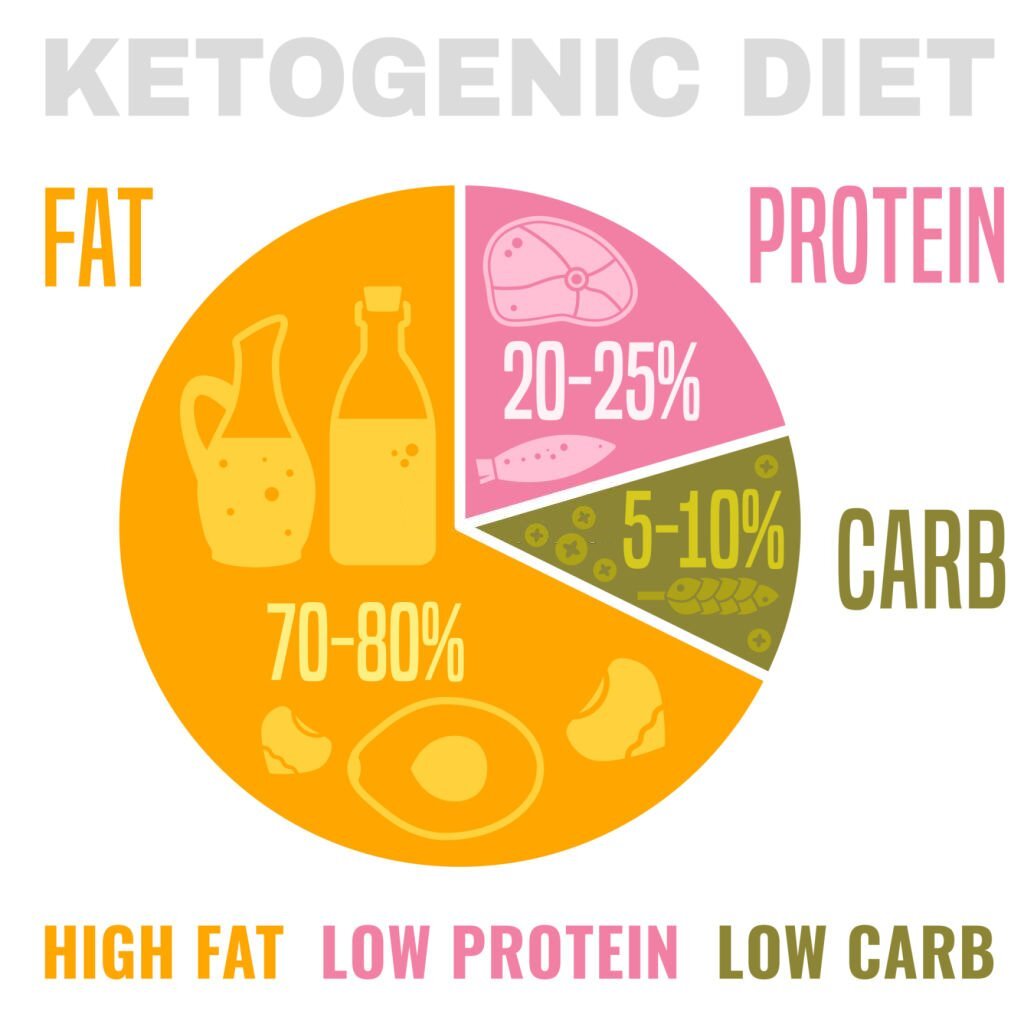
The Keto diet works by putting your body in a state of ketosis, which is a natural metabolic state where your body burns fat for fuel instead of carbohydrates. In a state of ketosis, your body uses ketones, which are produced from the breakdown of fat in the liver, as its main source of energy.
To achieve ketosis, you need to restrict your carbohydrate intake to a very low amount, usually 20-50 grams per day, and increase your fat intake. When you restrict carbohydrates, your body will use stored fat for energy, leading to weight loss. The body’s glucose stores are depleted, and it turns to fat as the primary energy source.
What You Can Eat on the Keto Diet
On the Keto diet, you can eat foods that are high in healthy fats, moderate in protein, and low in carbohydrates. Some of the foods that you can eat on the Keto diet include:
- Meat, poultry, and fish: Choose grass-fed and organic options whenever possible to get the most nutritious options.
- Eggs: Whole eggs or egg whites are a great source of protein and healthy fats.
- Dairy: Full-fat dairy products like cheese, cream, and butter are all acceptable on the Keto diet.
- Nuts and seeds: Almonds, macadamia nuts, and chia seeds are great options for snacking on the Keto diet.
- Low-carbohydrate vegetables: Broccoli, spinach, and cauliflower are some of the best options for getting your daily dose of vitamins and minerals while on the Keto diet.
- Avocados: Avocados are a great source of healthy fats and are a staple of the Keto diet.
What Foods You Should Avoid on the Keto Diet
The ketogenic diet commonly referred to as the “Keto Diet,” is a low-carb, high-fat diet that has gained popularity in recent years for its weight loss and health benefits. While the Keto Diet can be a great way to improve your health and reach your weight loss goals, it’s important to understand which foods you should avoid on the diet.
- Carbohydrates
One of the main goals of the Keto Diet is to limit carbohydrate intake and promote the consumption of healthy fats. High-carbohydrate foods, such as bread, pasta, rice, potatoes, and most fruits, should be avoided on the Keto Diet. Additionally, processed foods high in carbohydrates, such as candy, soda, and baked goods, should also be limited.
- Dairy
Dairy products can be included in the Keto Diet, but it’s important to choose full-fat options and limit your intake of high-carb dairy products, such as milk and yogurt. Full-fat dairy options, such as cheese and heavy cream, are a great source of healthy fats and can help you reach your daily fat intake goals.
- Beans and Legumes
Unfortunately, beans and legumes are high in carbohydrates and should be avoided on the Keto Diet. These foods are also often high in plant-based proteins, so it’s important to find alternative sources of protein, such as meat, poultry, fish, and eggs.
- Alcohol
While it is possible to drink alcohol on the Keto Diet, it’s important to choose low-carb options, such as wine and spirits, and limit your intake. Alcohol can stall weight loss and kick you out of ketosis, so it’s best to limit your alcohol consumption while on the Keto Diet.
In conclusion, understanding which foods to avoid on the Keto Diet is essential to success on the diet. By limiting high-carbohydrate foods, choosing full-fat dairy options, avoiding beans and legumes, and limiting alcohol intake, you can ensure that you are following the Keto Diet correctly and achieving your weight loss and health goals.
Getting Started with the Keto Diet: Your 7-Step Plan

- Determine your goals: Before starting the Keto diet, it is important to determine what your goals are. Are you trying to lose weight, improve your health, or both? This will help you determine the right approach and meal plan for your individual needs.
- Consult a healthcare professional: Before making any major changes to your diet, it is important to consult a healthcare professional. This will help ensure that the Keto diet is safe and suitable for your individual needs and health conditions.
- Learn the macronutrient ratios: The Keto diet is based on a specific macronutrient ratio, which is typically 70% fat, 25% protein, and 5% carbohydrates. Understanding this ratio is key to success on the Keto diet.
- Stock up on Keto-friendly foods: The Keto diet is based on a specific list of foods that are allowed and restricted. Make sure to stock up on Keto-friendly foods, such as eggs, cheese, avocado, nuts, and oils, to ensure that you have all of the ingredients you need for your meals.
- Plan your meals: Plan your meals in advance to ensure that you are eating the right foods and in the right quantities. This will help you avoid impulse eating and snacking on foods that are not part of the Keto diet.
- Monitor your progress: Keep track of your progress on the Keto diet by monitoring your weight, body fat percentage, and other key health markers. This will help you see the results of your hard work and make any necessary adjustments to your diet.
- Be patient: It can take time to see results on the Keto diet, so it is important to be patient and stick with it. If you hit a plateau, don’t give up – try adjusting your macronutrient ratios or seeking the advice of a healthcare professional.
When it comes to the Keto diet, what you eat is just as important as how much you eat. Here are some of the best foods to include in your Keto diet meal plan:
- Fatty cuts of meat: Beef, pork, and lamb are all great sources of protein and healthy fats.
- Poultry: Chicken and turkey are both excellent sources of protein and can be cooked in a variety of delicious ways.
- Fish: Fatty fish, such as salmon, are great sources of Omega-3 fatty acids and provide a range of health benefits.
- Eggs: Eggs are a great source of protein and can be cooked in a variety of ways, making them a versatile and convenient option for the Keto diet.
- Low-carb vegetables: Vegetables such as spinach, kale, and broccoli are low in carbohydrates and high in fiber, making them a great option for the Keto diet.
- Nuts and seeds: Nuts and seeds, such as almonds and chia seeds, are high in healthy fats and provide a range of health benefits.
- Dairy products: Cheese, cream, and butter are all high in fat and can be incorporated into a variety of Keto-friendly dishes.
- Healthy oils: Healthy oils, such as olive oil, avocado oil, and coconut oil, are great sources of healthy fats and can be used for cooking and as a dressing for salads.
Get Fit with Aerobic Exercise: A Complete Guide
How to Track Your Progress on the Keto Diet
One of the keys to success with the keto diet is to track your progress regularly. This will help you stay on track and make any necessary adjustments to ensure you’re getting the results you want. Here are a few things to keep an eye on:
- Physical Performance
Physical performance can also be a good indicator of progress on the keto diet. If you’re noticing improvements in your workouts or physical activity, it’s a good sign that your body is adapting well to the diet. If you’re feeling weak or fatigued during physical activity, it may be time to reassess your diet and make sure you’re getting enough nutrients.
- Mental Clarity
The keto diet has been shown to improve mental clarity and focus. If you’re feeling more focused and alert, it’s a sign that the diet is working for you. On the other hand, if you’re feeling mentally foggy, it may be time to adjust your diet and make sure you’re getting enough healthy fats.
- Weight Loss
The most obvious sign of progress on the keto diet is weight loss. This can be tracked by stepping on the scale regularly or taking measurements of your waist, hips, and other areas of your body. If you’re not losing weight, it may be time to reassess your diet and make sure you’re staying within the recommended macronutrient ratios.
- Energy Levels
The keto diet can result in a significant increase in energy levels. If you’re feeling more alert and focused, it’s a good sign that your body is adapting well to the diet. On the other hand, if you’re feeling tired and sluggish, it may be time to adjust your diet and make sure you’re getting enough nutrients.
How to Overcome Common Challenges with the Keto Diet
While the keto diet can be a highly effective way to lose weight and improve your overall health, there are some common challenges that many people face. Here are a few tips for overcoming these challenges:
- Keto Flu
One of the most common challenges with the keto diet is the so-called “keto flu.” This is a period of flu-like symptoms that can occur as your body adjusts to the new diet. Symptoms can include fatigue, headaches, and muscle aches. To overcome this challenge, make sure you’re staying hydrated, getting enough electrolytes, and taking it slow at first.
- Carb Cravings
Carb cravings can be a major challenge for many people on the keto diet. To overcome this challenge, try to keep yourself busy and distracted, drink plenty of water, and find healthy low-carb snacks to keep on hand. You can also try using natural sweeteners like stevia or monk fruit to satisfy your sweet tooth without the added carbs.
- Social Eating
Eating out or socializing with friends and family can be a challenge on the keto diet. To overcome this challenge, plan ahead and bring your own keto-friendly food or order dishes that are low in carbs. You can also try to find social events that don’t revolve around food, such as outdoor activities or movie nights.
